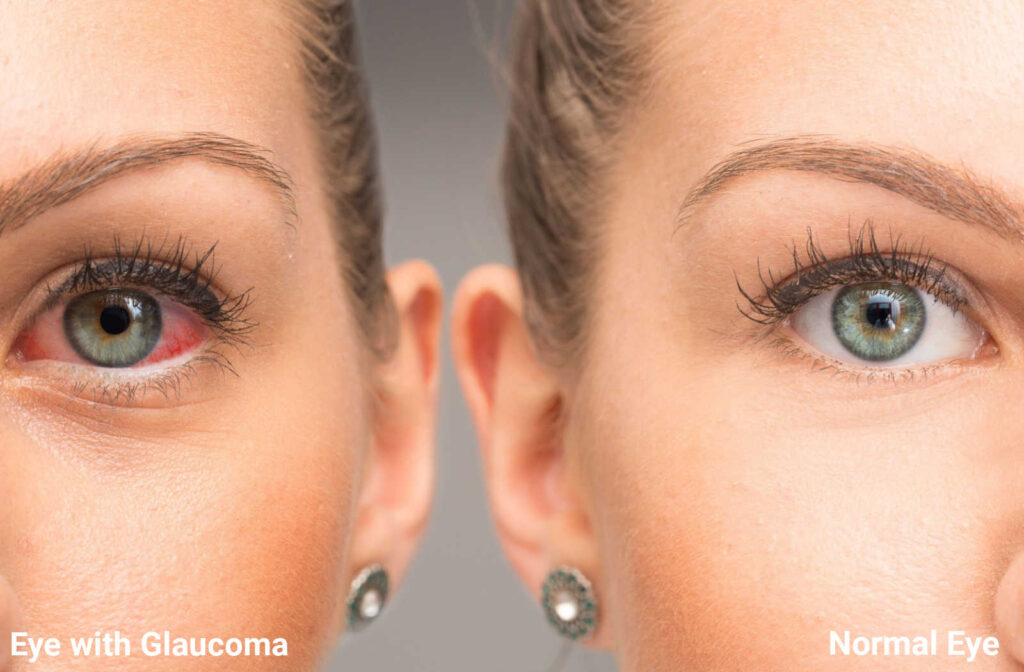
Glaucoma Symptoms and Treatment: What You Should Know
Glaucoma is a serious eye condition that can cause vision loss if left untreated. Understanding glaucoma, recognizing its symptoms, knowing the risk factors, and getting a proper diagnosis are key to managing the disease effectively. In this comprehensive guide, we will explore all you need to know about glaucoma symptoms and treatment options.
Understanding Glaucoma
Glaucoma is a group of eye diseases that damage the optic nerve, which connects the eye to the brain. It is often associated with high intraocular pressure (pressure inside the eye) and can gradually lead to vision loss. Without early detection and treatment, glaucoma can result in permanent vision impairment.
Glaucoma is a complex and multifaceted condition that requires regular eye examinations to monitor and manage effectively. The optic nerve is crucial for transmitting visual information from the eye to the brain, and any damage to it can have significant consequences on one’s vision. It is essential for individuals, especially those at higher risk, such as older adults and individuals with a family history of glaucoma, to undergo routine eye screenings to detect Glaucoma Symptoms and Treatment early.
What is Glaucoma?
Glaucoma is a condition that affects the optic nerve, causing damage and vision loss over time. It typically occurs when there is a buildup of fluid in the front part of the eye, increasing intraocular pressure and putting pressure on the optic nerve. This pressure can cause irreversible damage and lead to vision loss.
Furthermore, glaucoma is often referred to as the “silent thief of sight” because it can progress without noticeable symptoms in its early stages. By the time individuals experience vision changes, the disease may have already advanced significantly. This highlights the importance of regular eye exams and early intervention to prevent irreversible vision loss.

The Different Types of Glaucoma
There are several types of glaucoma, including primary open-angle glaucoma, angle-closure glaucoma, normal-tension glaucoma, and secondary glaucoma. Each type has its own characteristics and treatment approaches, but all share the common goal of managing intraocular pressure and preserving vision.
Primary open-angle glaucoma is the most common type and develops gradually over time, often without symptoms until vision loss occurs. Angle-closure glaucoma, on the other hand, can have sudden and severe symptoms such as eye pain, headache, and blurred vision. Understanding the differences between these types of glaucoma is crucial for proper diagnosis and treatment to prevent vision impairment.
Recognizing the Symptoms of Glaucoma
Glaucoma often develops slowly and without noticeable symptoms in its early stages. However, as the condition progresses, certain signs may become evident. Being aware of these symptoms can help you seek timely medical attention and prevent further damage.
Glaucoma is a serious eye condition that can lead to irreversible vision loss if left untreated. It is often referred to as the “silent thief of sight” because it can cause damage to the optic nerve without any obvious symptoms at first. This is why regular eye exams are crucial, especially for individuals over the age of 40 or those with a family history of glaucoma.
Early Warning Signs
In the early stages of glaucoma, you may experience subtle symptoms such as mild eye discomfort, slight blurring of vision, or increased sensitivity to light. These signs may be easily ignored or attributed to other causes, which is why regular eye check-ups are crucial for early detection.
It’s important to note that glaucoma can affect individuals of all ages, not just older adults. Certain types of glaucoma, such as congenital glaucoma, can present symptoms in infants and young children. Therefore, being vigilant about any changes in your vision or eye health is key to catching glaucoma early and preventing vision loss. Learn more about preventing vision loss at https://med.virginia.edu/ophthalmology/discovery-of-potential-new-way-to-prevent-vision-loss/
Progression of Symptoms
As glaucoma advances, symptoms may become more noticeable. These can include severe eye pain, headaches, blurred or reduced peripheral vision, and the appearance of halos around lights. If you experience any of these symptoms, it is essential to seek immediate medical attention.
Furthermore, certain lifestyle factors can impact the progression of glaucoma. For example, smoking, high blood pressure, and a diet high in saturated fats can increase the risk of developing or worsening glaucoma. Maintaining a healthy lifestyle, including regular exercise and a balanced diet, can help manage the condition and preserve your vision for longer.
Risk Factors for Glaucoma
While anyone can develop glaucoma, certain factors increase the risk of developing the condition. Understanding these risk factors is important for early detection and appropriate treatment.
Glaucoma is a complex eye disease that can lead to irreversible vision loss if left untreated. It is crucial to be aware of the various risk factors associated with glaucoma to take proactive steps in preserving your eye health.
Age and Glaucoma
Glaucoma becomes more common as people age. Individuals over the age of 60 have an increased risk of developing the condition and should be particularly vigilant about regular eye exams to detect any signs of glaucoma early on.
As the eye ages, the risk of developing glaucoma gradually increases due to changes in the eye’s drainage system. This age-related factor underscores the importance of regular eye check-ups, especially for older individuals, to catch glaucoma in its early stages.
Family History and Glaucoma
If you have a close family member, such as a parent or sibling, with glaucoma, your risk of developing the condition is higher. Regular eye exams are necessary to monitor your eye health and detect glaucoma in its early stages, if present.
Genetics play a significant role in the development of glaucoma, with certain gene variations predisposing individuals to the disease. Understanding your family history of eye conditions can provide valuable insights into your own risk factors for glaucoma and guide appropriate preventive measures.
Diagnosis of Glaucoma
Diagnosing glaucoma requires a comprehensive eye examination and specialized tests to measure intraocular pressure and evaluate the condition of the optic nerve. Glaucoma is a progressive eye disease that can lead to irreversible vision loss if left untreated, making early detection crucial for preserving eyesight.
Eye Examinations
A thorough eye examination involves various tests to assess visual acuity, measure intraocular pressure, examine the optic nerve, and evaluate peripheral vision. These examinations are painless and provide valuable information for an accurate diagnosis. During the examination, the ophthalmologist may also dilate the pupils to get a better view of the optic nerve and retina, allowing for a more detailed assessment of any potential damage caused by glaucoma.
Glaucoma Tests
In addition to the standard eye examinations, specific tests may be performed to diagnose and monitor glaucoma. These tests include tonometry to measure intraocular pressure, gonioscopy to assess the drainage angle of the eye, and optical coherence tomography (OCT) to obtain detailed images of the optic nerve. These advanced diagnostic tools help in determining the type and severity of glaucoma, guiding the treatment plan for each individual patient. Regular monitoring through these tests is essential to track the progression of the disease and adjust treatment as needed to maintain eye health. Click here to learn more about maintaining eye health.

Treatment Options for Glaucoma
Although there is currently no cure for glaucoma, various treatment options are available to control the disease’s progression and preserve vision.
Glaucoma is a complex eye disease that affects the optic nerve and can lead to irreversible vision loss if left untreated. It is often referred to as the “silent thief of sight” because it typically progresses slowly and without noticeable symptoms until significant vision loss has occurred. Regular eye examinations are essential for early detection and prompt treatment of glaucoma.
Medication for Glaucoma
Eye drops are commonly prescribed to lower intraocular pressure and reduce the risk of vision loss in glaucoma patients. These medications work by either decreasing fluid production or increasing fluid drainage from the eye. Compliance with the prescribed medication regimen is crucial for effective management of the condition.
In addition to eye drops, oral medications may also be prescribed to help lower intraocular pressure in some cases. These medications may be used alone or in combination with eye drops to achieve optimal control of glaucoma. It is important to follow the recommended dosage and schedule provided by your eye care provider to maximize the effectiveness of the treatment.
Surgical Procedures
In some cases, medication alone may not effectively control intraocular pressure. In such instances, surgical procedures may be recommended. These procedures aim to improve fluid drainage from the eye or reduce fluid production to lower intraocular pressure and preserve vision.
One common surgical option for glaucoma is laser trabeculoplasty, which uses a high-energy laser to improve the drainage of fluid from the eye. Another surgical procedure, known as trabeculectomy, involves creating a new drainage channel to allow excess fluid to drain out of the eye, reducing intraocular pressure. Your ophthalmologist will determine the most suitable surgical approach based on the severity of your condition and your individual eye health needs.
In conclusion, glaucoma is a serious eye condition that requires proper understanding, early detection, and appropriate treatment. By recognizing the symptoms, understanding the risk factors, and seeking timely medical attention, you can take proactive steps in managing glaucoma and preserving your vision for the long term.
Learn more.
